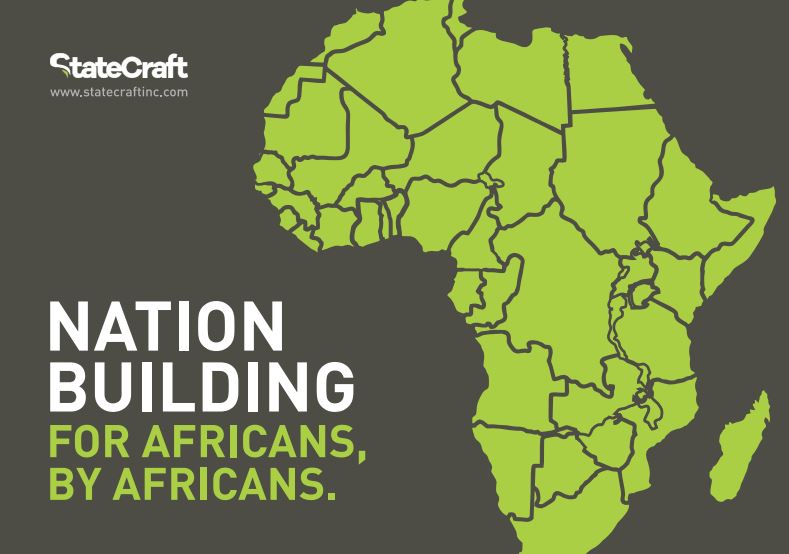Student Loan Act – Critical Analysis

INTRODUCTION
On June 12, 2023, the Student Loans (Access to Higher Education) Act, 2023 was passed with the assent of the President, Bola Ahmed Tinubu. The law aims to create a legal framework for the provision of loans to poor or low-income Nigerians to facilitate payment of their school fees. This ensures that poor Nigerians can easily access higher education because they will be able to pursue higher education. benefit of interest-free loans from the Nigeria Education Loan Fund established under the Act.
The significance of the legislature as detailed in its explanatory memorandum is ”to provide easy access to higher education for Nigerians through students’ loans with a view to providing education for all Nigerians.” This Student Loan Act policy brief projects an analysis of the Act, highlighting observations and also some crucial concerns while suggesting, recommendation road map in order to assist government intervention in Nigeria’s higher education.
HIGHLIGHTS OF THE ACT
- Repealment: The Student Loans Act repeals the Nigeria Education Bank Act, of 2004. Therefore, all assets, funds, and immovable properties vested under the repealed Act shall be transferred to the Student Education Loan Fund established by the Student Loans Act of 2023. Article 21 (1) (2).
- Scope: THE Law applies to all matters relating to the application of loans to Nigerians seeking higher education in institutions of higher learning in Nigeria via the Nigerian Education Loan Fund.
- Nigerian Education Loan Fund: The law established Nigerians that the student Loan Fund will be located, and managed by the central bank of Nigeria through deposit money banks in Nigeria. See Article 5 (1), (2).
- Fund Channel: Financial resources for the Fund will come from many different sources such as education bonds and endowment funds. Additionally, the fund will receive 1% of all federal taxes, fees, and duties collected by the Federal Inland Revenue Service (FIRS), Nigeria Immigration Service, and Nigeria Customs Service. The fund will also collect 1% of all profits from oil and other minerals. Donations, gifts, and any other potential sources of income will also contribute to the Foundation. See section 12.
- Equal Rights to Access the Loan: The law asserts that irrespective of gender, Position, tribe, religion, or any form of disability, all students irrespective of their social status, seeking higher education in any public institution across Nigeria should have equal rights to access the student loan. Nevertheless, this requirement is equally subject to the provisions of any act which is clearly stated in Section 2 of the Student Loan Act.
- Purpose of the Loan: The Student loan to be granted to students under this Act is specifically for the payment of tuition. See Section 3 of the Student Loan Act.
- Special Committee: The CBN Governor will set up a special committee to oversee the functions of the funds allocated to the student loan act. This committee will be responsible for establishing regulations and procedures for the administration, disbursement and management, and repayment of the Student Loan Act. See section 5 (3), section 6.
- Members of the special committee: The Members of the special committee shall include the governor of the Central Bank of Nigeria (as Chairman), Fund Secretary, Minister of Education, Rector of National Universities, Committee, representatives of the All-Nigeria Deputy Prime Ministers Forum Universities, representatives of the Nigerian Principals Forum Polytechnic Forum and Principals of all Colleges of Education in Nigeria, Minister of Finance, Auditor General of the Federation, Academic staff representative.
PROS OF THE STUDENT LOAN ACT
Access to education, flexible repayment terms, and low interest rates on government-backed loans. With rising commodity prices in Nigeria, including tuition fees, student loans can help in the long run. Pros of the Student Loan Act include:
-
- It allows students to focus on their studies without the immediate financial burden.
- It significantly improves students’ learning experience but also increases their chances of academic success.
- It provides students with access to higher education, which plays a vital role in building a skilled workforce capable of driving innovation, entrepreneurship, and economic development.
CONS OF THE STUDENT LOAN ACT
Some of the cons of the Student Loan Act include:
- MINIMUM INCOME
The annual income set at ₦500,000 in order to access these loans seems unrealistic, there is a need to increase this amount. The reason is not far-fetched, approximately, the applicant or his parents must be receiving less than ₦45,000 per month to qualify for this loan. For example, it is practically impossible for a student from a family of 5 whose parents/guarantor earns a combined N100,000 per month to be a sustained beneficiary of these loans, because it is expected that this law will lead to an increase in tuition fees by most tertiary institutions - FAILURE TO ACKNOWLEDGE OTHER FEES
The Act only focuses on tuition fees but instead should extend the same to other needs such as Housing, Meals, books, laptops, and transportation in school. The demand for student loans far exceeds available resources, leaving many deserving students without access to financial aid. This student loan act tends to favor students from wealthier backgrounds, who can access quality education without resorting to loans. Furthermore, the need to provide two guarantors demonstrates a disconnect between the target audience and the nature of the guarantors required. Low-income households with an annual income of less than N500,000 are less likely to have strong enough relationships with guarantors who are likely to put their careers on the line to access the loan. - DELAY IN GRADUATION
Before the student loan is passed, The Federal government needs to first urgently address the prevailing issue of the unstable academic program. It was observed that many students did not graduate on time due to various issues such as the ASUU strike and delays in projects and theses from students and especially from their supervisors. It is observed that most postgraduate students in Nigeria graduate much later than their due date, apparently due to problems in university management. Duze (2011) conducted a study investigating institutional differences in tenure, age, and location and found that delays in graduation occurred in all universities in Nigeria. There are many factors that explain the slow graduation of students from higher education institutions. There are institutional factors and personal factors. For example, a study by Modisproject (2017) was conducted to identify factors believed to cause delays in the successful completion of a postgraduate program at the Faculty of Nursing, UNEC. Results showed that the main personal factors contributing to delayed completion of schooling were roles that conflict with academic work; are not satisfied with the way the program is organized and are not allowed to take time off from school for the program. For supervisors, the main personal factor is that most students lack knowledge about research work. The main environmental factor contributing to procrastination is work interference with academic work. For supervisors, the main environmental factors are that students combine work and study and that most students live and work outside the school environment. The main institutional factors are inadequately equipped libraries and heavy teacher workloads. Supervisors also pointed out that there was too much workload between the undergraduate program and the graduate program. Many undergraduate and graduate students are delayed in various higher education institutions due to problems with their supervisors. The academic calendar must be respected in all higher education institutions since students have to bear the burden of paying tuition through loans.
The content of study programs in Nigerian higher education institutions is not very relevant to real-world realities. Ogunode (2020) reported that Nigeria’s current university programs are inadequate as they are not suitable for the 21st-century workplace.
(Akpan and Etor 2016) suggested that another factor influencing the quality of higher education is the completeness and relevance of program content for learners to bring about positive changes in them.
The curriculum content of our universities has been heavily criticized as being out of step with the needs of students and the job market.
Furthermore, Obadara and Alaka (2013) reported in their study a significant relationship between accreditation and resources provided to Nigerian universities, quality of output, and quality of the process, but there is no significant relationship between accreditation and academic content quality. Akomolafe & Ibijola (2014) said that it seems that the infrastructure, curriculum, learning environment, and teaching staff are not enough to bring the best to students and meet the wishes and aspirations of the Nigerian people. Tessema & Ready (2012) found a positive correlation between a program offering more courses to students and more options for their students. A program that provides a variety of options for students to choose from connects and directly relates to their interests, and allows them to explore educational material in a way that connects what they learn to themselves and the world around you will certainly bring satisfaction. Building a meaningful curriculum and streamlining content is very effective in ensuring student satisfaction. Ogunode (2023) argues that this is intended to address the problem of low employment rates of Nigerian graduates and is in line with NUC’s mandate to make higher education in Nigeria more responsive to the needs of society.
The Federal Ministry of Education, through the National Universities Commission, has embarked on a radical redesign of the curriculum in Nigerian universities to meet global standards and good international practices.
Aims to prepare Nigerian graduates for the global economy in the fourth revolution and acquire the skills needed for the future. The new Core Curriculum and Minimum Academic Standards (CCMAS) have been officially issued for application in many universities. The government needs to ensure that the Core Curriculum and Minimum Academic Standards (CCMAS) are monitored and implemented fully as planned to help enhance the employability of Nigerian graduates in the market job.
COMPARATIVE ANALYSIS (STUDENT LOAN IN NIGERIA VS. THE ADVANCED COUNTRIES)
In advanced countries, students still cannot repay their loans, not to mention Nigeria, where the system has many loopholes and students with physical disabilities are among the most vulnerable. In the United States, the Education Data Initiative shows that 1 in 10 Americans are in default on their student loans and 5% of all student loans are in default. Recently, the U.S.
Supreme Court blocked President Joe Biden’s student debt relief plan, saying his administration does not have the authority under the HEROES Act to cancel student debt for each borrower at 20,000 USD. The relief plan aims to provide up to $10,000 to individual borrowers earning less than $125,000 per year or couples earning less than $250,000, and up to $20,000 to need-based Pell Grant recipients during their university studies. In the United States, 43.
6 million people owe $1.6 trillion in federal college loans, more than they owe on auto loans, credit cards, or any consumer debt other than debt. Mortgage. All 43.6 million people could have participated in the debt relief plan. In 2016, The Institute for Fiscal Studies reported that only 175 of UK graduates earned enough money in 30 years to repay their student loans in full. Ultimately, the government canceled more than 50% of student loans, in whole or in part, certain conditions must be met before loans can be forgiven based on any of the five student loan plans. Even though student loans in the US and UK carry interest, while ours do not, how can a needy person get N500,000?
Furthermore, according to section 7(2) of the Nigerian Student Loan Act, the committee appointed in charge of the funds consists of 11 people, the last 3 are representatives of the Nigerian Labour Congress (NLC) and the Nigerian Bar Association as well as members of the teaching staff of Universities (ASUU). However, there is no one representing who benefits from the loans.
RECOMMENDATION
The future prospects of the student loan system in Nigeria present both challenges and opportunities. To ensure a more comprehensive and sustainable loan act, several recommendations can be considered. A more proactive approach is needed to address the poor state of higher education institutions across Nigeria. Implementing student loans can lead to increased tuition costs, leaving many families unable to pay these fees and their children unable to access loans due to reduced eligibility criteria. An upward adjustment to qualifying annual family income from N500,000 to about N5 million could help cushion the impact of tuition increases. The main costs that students incur include living expenses and administrative costs and students are very much likely to incur more living expenses due to the removal of fuel subsidy and due to the current inflation rate of about 25.8%. For many students, high costs lead to missed classes and absences from other academic activities. The scope of student loans should be expanded to cover living expenses, ensuring better coverage of student expenses. Although student loans have a long history around the world, these programs are not without flaws. In the case of Nigeria, there are also several other issues related to students that the government could have prioritized. (For example, by 2022, Nigeria will have about 90 million unemployed graduates, the government should prioritize proffering solutions to the soaring unemployment rate before implementing the student loan act as implementing the latter of the former could lead to further increasing the unemployment rate. Many are calling for the extension of the student loan to all Nigerians regardless of financial background and type of institution, and while this is great, it is advisable to keep the loan accessible to public institutions for now.
Secondly, strengthening loan repayment mechanisms, such as implementing income-driven repayment plans and offering loan forgiveness programs, can lessen the burden on borrowers because the act clearly states that “beneficiaries of the student loan is to commence repayment 2 years after the completion of their NYSC Program”, this is highly unrealistic as a large percentage of students are still clearly without jobs that would enable the repayment plan after 2 years. By implementing these recommendations, Nigeria can build a student loan system that promotes educational equity, reduces loan defaults, and paves the way for a better future for its future students.
CONCLUSION
The student loan system in Nigeria faces challenges and criticism, but it also has the potential to create transformational change. The Student Loans Act only addresses a small portion of Nigerian university students, not the majority. With strict deadlines imposed by student loan laws, technology is essential to make, track, and collect debt. What is commendable is that student loans have no interest. Unfortunately, the annual income limit of five hundred thousand naira for students or families is low. The data may not be easily compiled, but most families considering university in Nigeria can live on an annual income in excess of five hundred thousand naira. Using the national monthly minimum wage as a criterion, finding parents who earn less than 42 thousand naira per month is a security and social risk.
By addressing issues such as high default rates, limited loan capital, and promoting financial education, the system can become more inclusive and sustainable. Exploring alternative approaches such as income-sharing agreements and vocational pathways that further improve access to education. However, sustained efforts are needed, including increased funding, enhanced reimbursement mechanisms, and partnerships with private entities. By adopting these recommendations, Nigeria can create a student loan system that empowers students, reduces discrepancies, and promotes the country’s educational and socio-economic development.
Student Loans must be secured by Future employment. Insurance is sufficient odds against job loss, an event that allows borrowers to default on employment-related loans. The Chairman of the special committee on the Student Loans Act must address the inevitable hurdles for the benefit of Nigerian Students.
REFERENCES
Kossey, M.M. and Ishengoma, J.M., 2017. Issues and challenges of student financing systems in Africa: The case of Tanzania. International Journal of African Higher Education, 4(1).
Ogunode, N.J., Ukozor, C.U. and Ayoko, V.O., 2023. Students’ Loan in Tertiary Education in Nigeria: Pre-conditions for Effective Implementation. Best Journal of Innovation in Science, Research and Development, 2(2), pp.97-104.
Ogunode, N.J., Dahiru, K.M. and Jogbojogbo, S.S., 2023. Students’ Loans Programme and Tertiary Education in Nigeria. Best Journal of Innovation in Science, Research and Development, 2(7), pp.275-285.
Osagie, E.N. and Dawam, P., Inadequacy of Teaching and Learning Infrastructure: Reason Nigerian Universities Cannot Drive Innovation. Australian Journal of Education and Learning Research.
Adewuyi, J.O. and Okemakinde, T., 2013. Higher Education Financing in Nigeria: Issues and Trends. International Journal of Educational Administration and Policy Studies, 5(7), pp.121-127.
Akpan, C.P., Ntukidem, P.J., Ekpiken, W. and Etor, R., 2009. The challenges of teacher education in Nigeria. International Journal of Internet Education, 4, pp.169-178.
Ogunode, N.J., Ukozor, C.U. and Ayoko, V.O., 2023. Students’ Loan in Tertiary Education in Nigeria: Pre-conditions for Effective Implementation. Best Journal of Innovation in Science, Research and Development, 2(2), pp.97-104.
Nyahende, V.R., 2017. Students’ loans by financial institutions: The way to reduce a burden for government funding to higher education in Tanzania. International Journal of Learning, Teaching and Educational Research, 16(11), pp.92-115.
Salmi, J., 2003. Student loans in an international perspective: The World Bank experience. LCSHD paper series, 44.
Shen, H. and Ziderman, A., 2009. Student loans repayment and recovery: international comparisons. Higher education, 57, pp.315-333.
Simkovic, M., 2013. Risk-based student loans. Wash. & Lee L. Rev., 70, p.527.







